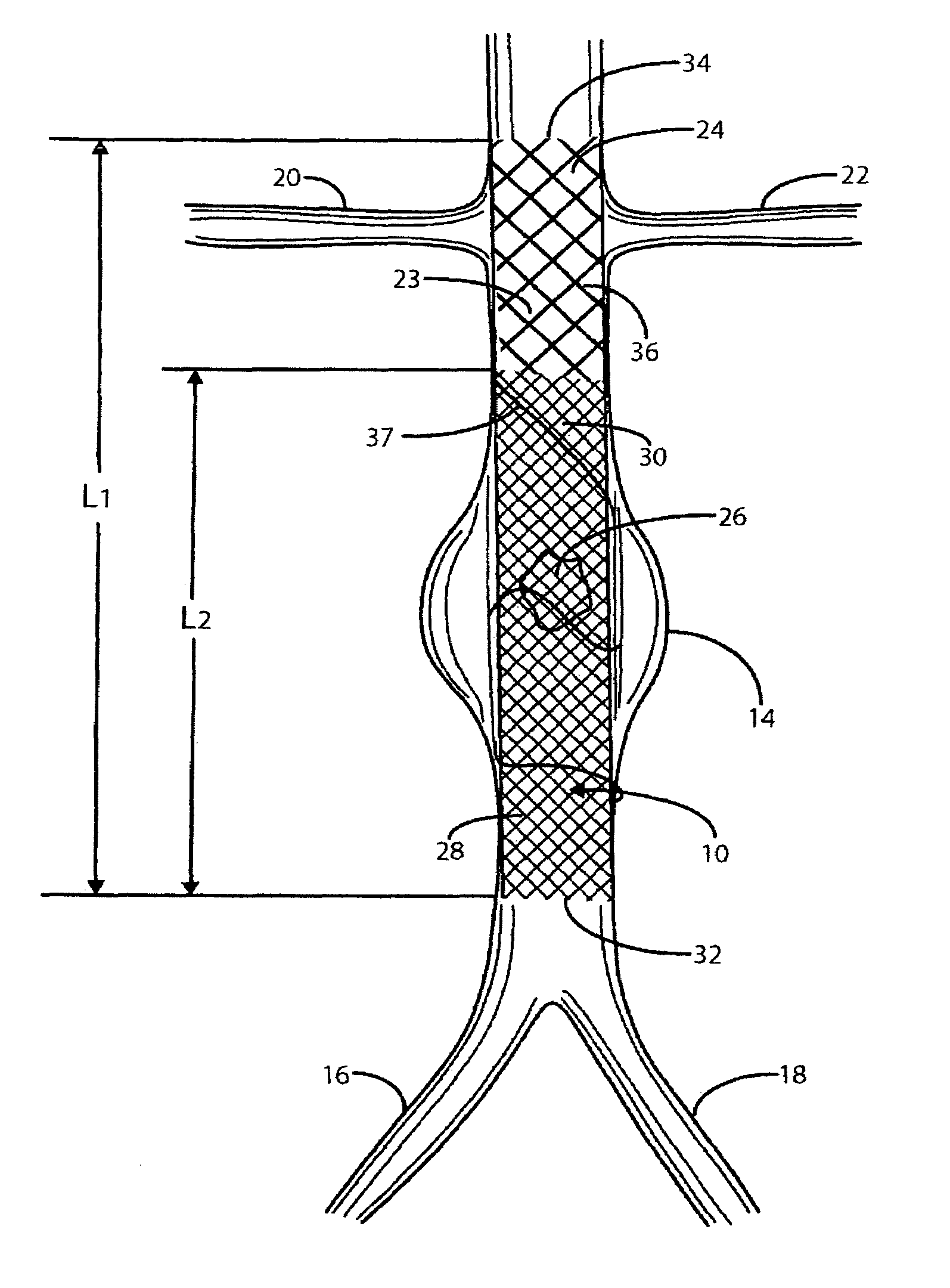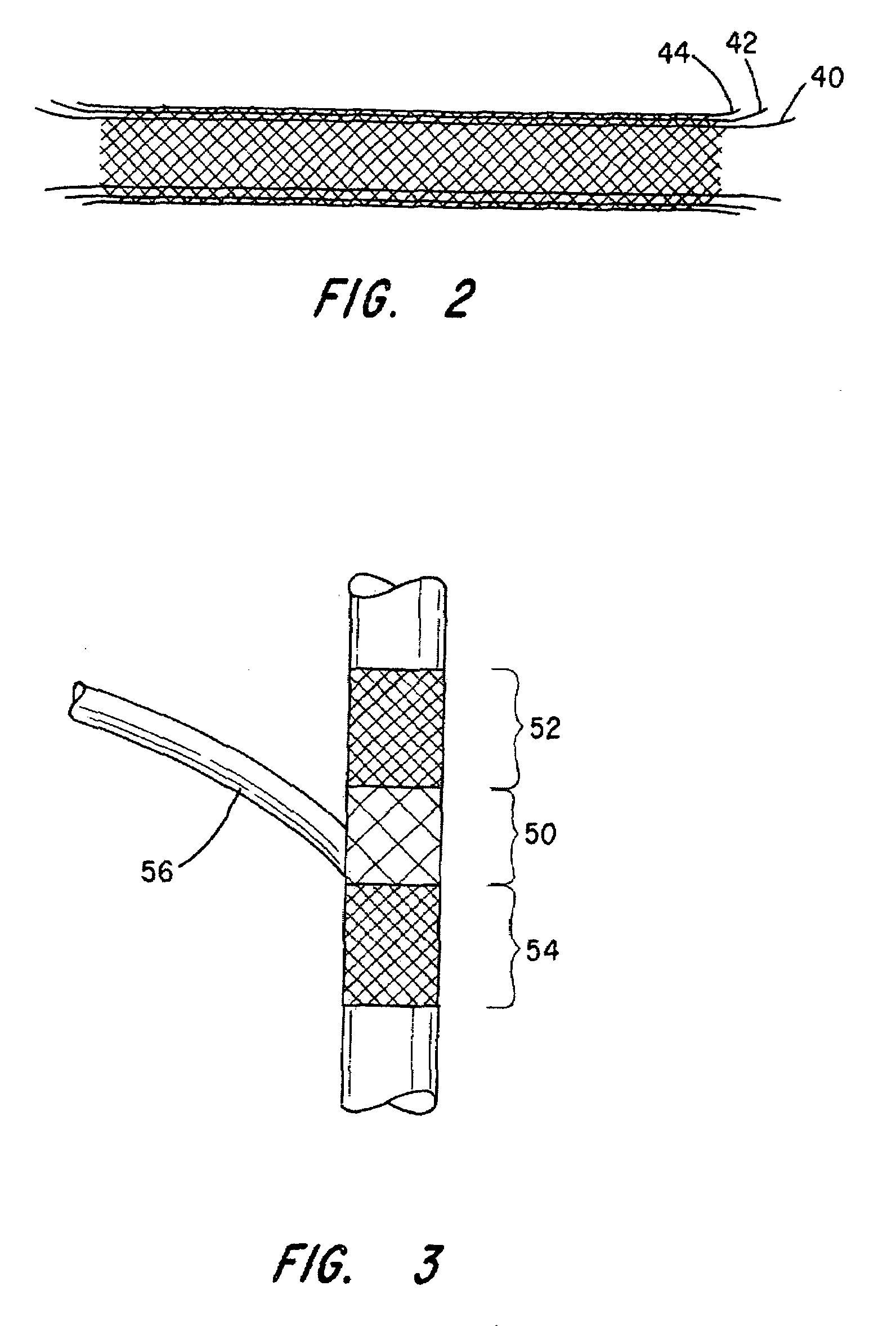Intravascular deliverable stent for reinforcement of vascular abnormalities
a technology of vascular abnormalities and deliverable stents, which is applied in the field of deliverable stents or grafts, can solve the problems of low survival chances, too late, and not well suited for intravascular treatment of aaa
- Summary
- Abstract
- Description
- Claims
- Application Information
AI Technical Summary
Benefits of technology
Problems solved by technology
Method used
Image
Examples
Embodiment Construction
[0045]Referring to FIG. 1, there is indicated generally by numeral 10 the preferred embodiment of the stent / graft constructed in accordance with the present invention. The stent / graft 10 is shown in place in a segment of the abdominal aorta 12 having an aneurysm 14. At its lower end, the abdominal aorta 12 branches into the left and right common iliac arteries 16 and 18. Also shown in FIG. 1 are renal arteries 20 and 22 leading to the kidneys (not shown).
[0046]The stent / graft 10 comprises an innermost tubular structure 23 of a first length (L1) and at least one further tubular structure 26 of a length L2, both structures having a predetermined similar diameter. The stent / graft may have an overall length L1 in the range of 12 to 16 cm, preferably 14 cm. and a length L2 in the range of 8 to 12 cm, preferably 10 cm.
[0047]The innermost tubular structure comprises a first plurality of braided wire strands 24, preferably of a shape memory alloy, such as Nitinol. The braid comprising the i...
PUM
 Login to View More
Login to View More Abstract
Description
Claims
Application Information
 Login to View More
Login to View More - R&D
- Intellectual Property
- Life Sciences
- Materials
- Tech Scout
- Unparalleled Data Quality
- Higher Quality Content
- 60% Fewer Hallucinations
Browse by: Latest US Patents, China's latest patents, Technical Efficacy Thesaurus, Application Domain, Technology Topic, Popular Technical Reports.
© 2025 PatSnap. All rights reserved.Legal|Privacy policy|Modern Slavery Act Transparency Statement|Sitemap|About US| Contact US: help@patsnap.com



